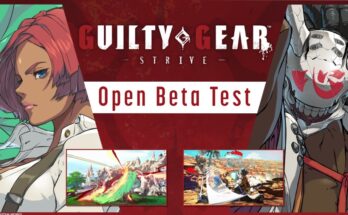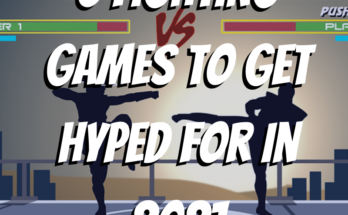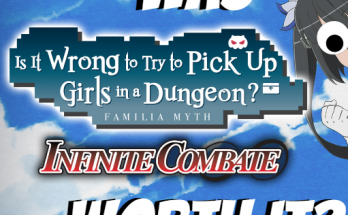Fighting Game tournaments are becoming more and more frequent, because of the growth of the community and broadcasting technologies becoming more accessible and affordable than even before. Since most of the organizers behind the events have to decide the games available to compete, it’s no surprise that some events aims at a specific public, or is respecting a specific theme.
The most popular theme employed for specific fighting games events are the Anime FGC Tournaments. The most known ones are CEOtaku in Orlando, or NGI’s Revolution in London. But over the last few years, they started to multiply. We know have Anime Ascension, Bavaria Burst, Climax of Night, LGBT Plus, and a lot more of them. AnimEVO can be listed there, but it’s more of an event in an event, rather than a fully-fledged gathering like the others.
But what exactly qualifies a fighting game for being “Anime”? What exactly defines a so-called “Anime Fighter”?
To each their own.

Japanese culture was always something deep within the FGC’s root. The entire community was mostly made by Japanese companies, and there’s always a stigma surrounding Western-based fighting game series like Mortal Kombat or Killer Instinct, which had decades without being really noticed by the overall community.
During the 1990’s, it was easy to discern the types of art performed by the various Arcade publishers releasing fighting games. Capcom had a noticeable Western style, seen in most of the main Street Fighter eras, as well as in Darkstalkers, which has a resolute Disney-like style of animation. And of course, it’s hard to forget the partnership with Marvel, huge brand in the realm of American Superheroes, which gave the Marvel VS Capcom series.
Meanwhile, SNK and their main fighting game series, The King of Fighters, were always inspired by a more realistic approach on the look of their characters. Some of them, like Kyo or Iori, are pretty close to what a protagonist in a High School anime would look like.
At the very end of the 1990’s, it was the start of Arc System’s own, Guilty Gear. It had an over-the-top, in-your-face style, with charismatic characters and a Metal-inspired soundtrack. More than a decade later, especially after the release of Guilty Gear Xrd, the series stayed on the top of the Anime side of fighting games, being the main event of the Anime Tournaments I’ve mentioned.
Heaven or Hell!

As a fighting game series, Guilty Gear has been very influential. The series’ aerial mobility and huge offensive aspect inspired very known series within the FGC, like Arc System’s Blazblue, Examu’s Arcana Heart, or French Bread’s Melty Blood. The FGC noticed the inspirations, and regrouped those games within a subgenre of fighting games, called Airdashers. Because they were the first to put aerial dashes, not as character-specific tools, like in Darkstalkers or the Marvel VS Capcom series, but as universal mechanics across all cast. There’s more caviats in what really makes an Airdasher, like the Bursts, or the Cancel mechanics to extend the combos.
In the mid-2000’s, there was a boom of fighting game “doujins”, which are Japanese independent video games. A lot of them have an aesthetic and art style that is undoubtedly Anime. Again, Melty Blood comes to mind, but also the Touhou series, infamous within the doujin world, also had its own fighting game episodes. The most popular one must be Hisotensoku, that still has its fans today.
What is interesting is that not all of those fighting game doujins are Airdashers, or directly inspired by Guilty Gear. Vanguard Princess or Akatsuki Blitzkampf takes way more inspiration from Street Fighter or The King of Fighters, than the iconic series by Arc System. The same goes for games that are more fully fledged, like Battle Fantasia, made by Arc System, or Koihime Enbu.
Form and Substance.

This challenges the whole “Anime Fighters” term and its usage. Because all of those games have very distinctive, Manga-inspired art styles, but they do not share the same style of gameplay. It doesn’t stop a lot of people describing “Anime Fighters” as a subgenre of fighting games. Which is very confusing, especially for new players.
You often hear Bandai Namco’s Dragon Ball FighterZ, or even LabZero’s Skullgirls, being described as “Anime Fighters”. But both of them draw most inspiration from the Marvel VS Capcom series. And while DBFZ is as Anime as we can get for an art-style perspective, Skullgirls is as Cartoon as we can get. Lab Zero’s animation director is even the daughter of a very known Disney animator.
There’s nothing wrong in describing an art-style, or preferring one over the other. But “Anime Fighters” as a gameplay description is as useful as watching the color of a building to describe what kind of location it is. “Well, the whole thing is white, so it must be a hospital, right?” And that is without adding Arena Fighters into the mix, which would be even more confusing.
Esports and Competitive Gaming (V3) !
Les jeux (potentiellement) esportifs sont multiples et variés, et permettent des expériences vidéoludiques très différentes.
Voici le schéma actualisé de toutes ces possibilités, que les jeux possèdent une scène compétitive pro ou amateur. pic.twitter.com/tzyh3pnGag— Nico Besombes (@NicoBesombes) January 6, 2018
An art style should be completely independent from the type of gameplay a fighting game is inspired by. “Anime” events like mentioned above, also feature games like DJ Max Respect, Catherine or Puyo Puyo. Both have strong Anime hardstyle, but they aren’t even fighting games in the first place.
Again, it comes to showing and appreciating the diversity within the pool of games played by the FGC. There’s no reason to hide it and making it more confusing, especially for the people outside our community. Clearer usage of terms, especially on subgenres, can truly help us in the future.



